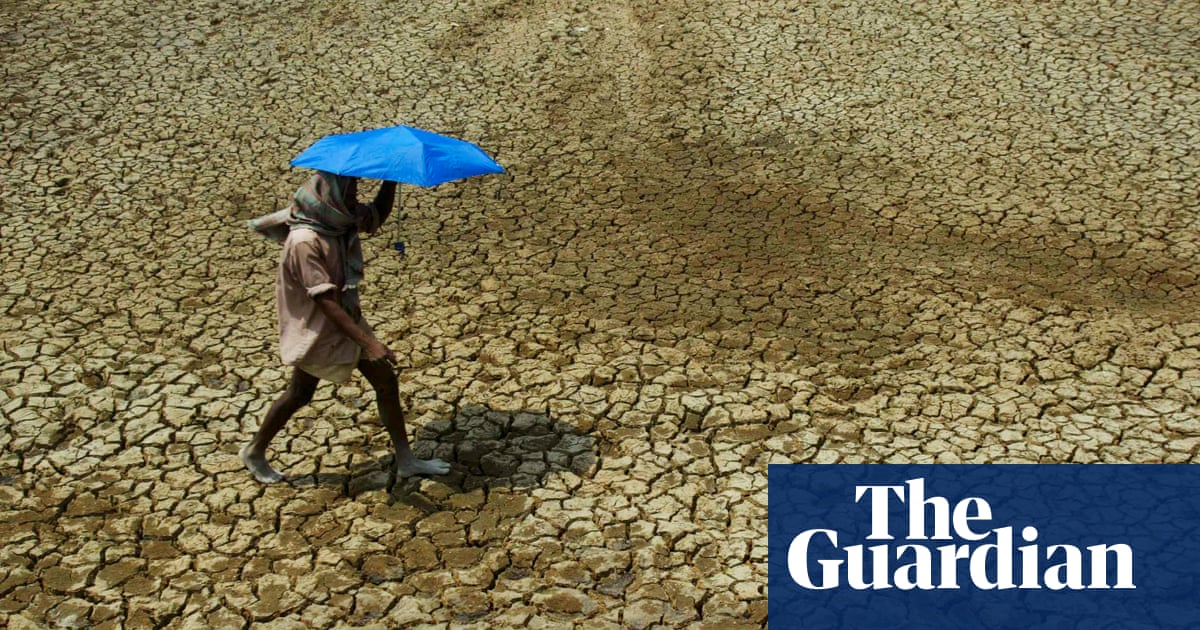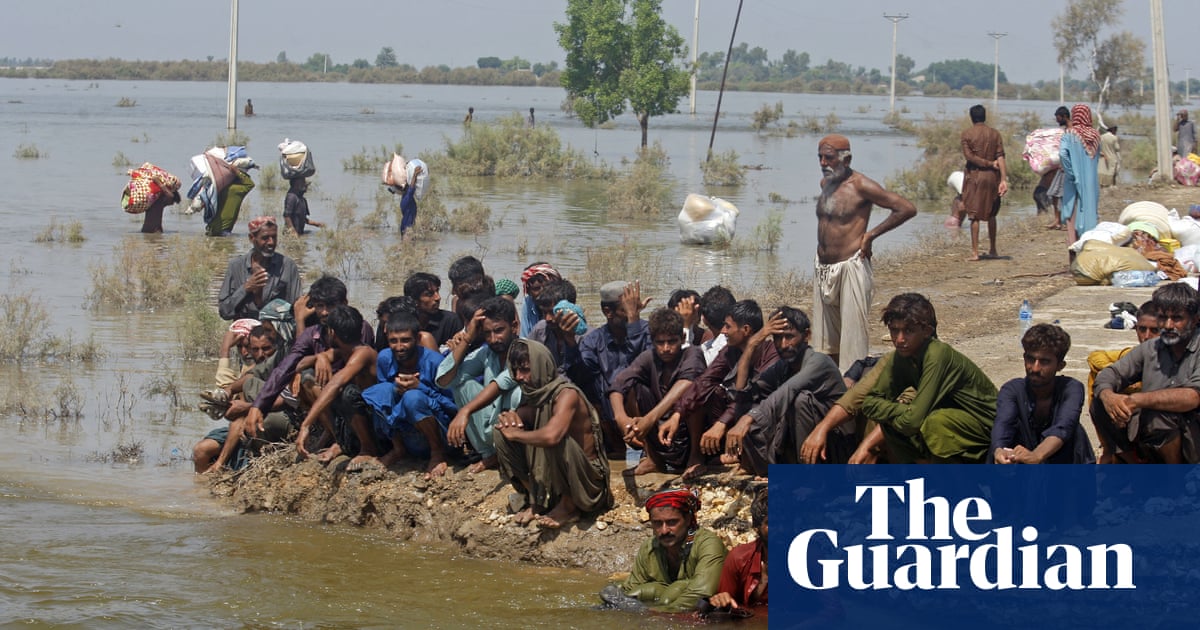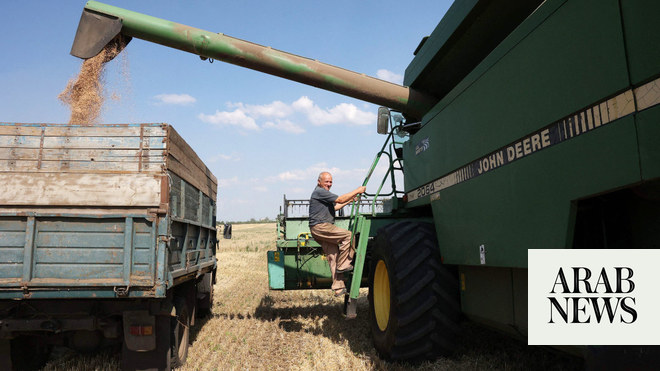
Countries have agreed key measures to supply funds to the world’s most vulnerable people to repair the damage from climate breakdown.
Governments from richer and poorer countries drew up the blueprint for a new “loss and damage” fund after a tense two-day meeting under UN guidance in Abu Dhabi that ended late on Saturday night.
The loss and damage fund will be administered at first by the World Bank, and will draw on funding sources including large developing countries as well as the US, the EU and the UK. No firm target has been set for how much money the fund will disburse, but countries most affected by the climate crisis hope it will reach hundreds of billions of dollars within a few years.
The blueprint must be formally adopted at the Cop28 UN climate summit in Dubai at the end of this month, but this weekend’s agreement by the transitional committee, set up under the UN framework convention on climate change, means that is likely.
Avinash Persaud, a climate envoy for Barbados and the transition committee for Latin America and the Caribbean, said: “This was a challenging but critical outcome. We now have for the first time an instrument that will operationalise an international fund for grant-based financing of reconstruction, rehabilitation and relocation after extreme weather or slow onset events. This is an important step forward and will bring positive momentum to other climate actions.”
Developing countries made key concessions, such as agreeing that the fund could be managed on an interim basis by the World Bank. Developed countries also agreed language that implied they should be the key donors to the fund, as they would be “urged” to contribute while others would be “encouraged” to do so.
However, campaigners said the agreement was not enough to guarantee the funds needed for vulnerable countries, likely to reach trillions of dollars a year by the end of this decade. Harjeet Singh, the head of global political strategy at Climate Action Network International, said: “It is a sombre day for climate justice, as rich countries turn their backs on vulnerable communities. [This] falls short of providing vulnerable communities with adequate assurance that their financial needs for coping with climate impacts and rebuilding their lives will be met.”
Loss and damage, which means the rescue and rehabilitation of communities stricken by climate disaster, has been one of the most vexed issues at global climate talks for more than a decade. Poorer countries, with tiny carbon footprints, have done the least to cause the climate crisis but are bearing the brunt of its impacts.
In a breakthrough last November, the Cop27 summit in Egypt agreed to a loss and damage fund being set up. But four meetings of the transitional committee, charged with designing the fund, between March and October broke down in rancour as countries wrangled over who should bear most responsibility for paying in, which countries should benefit, and how the fund should be governed.
Two days of intense negotiations again looked ready to break down on Saturday when the co-chairs late in the evening presented squabbling parties with a “take it or leave it” text. This “urged” developed countries to contribute to the fund and “encouraged” developing countries to do the same.
Some campaigners were unhappy that developed countries were not being more strongly confronted with their past greenhouse gas emissions. Singh said: “The reluctance of wealthy nations to fulfil their financial responsibilities, in spite of historical obligations, has starkly revealed their true intentions and their indifference to the plight of the developing world.”
A US state department official said: “No single government, or subset of governments, has enough resources to meet the funding needs of particularly vulnerable nations at the scale that is required. That’s why we made clear throughout these negotiations how crucial it is for this fund to be able to receive financial input from the widest range of sources, including innovative ones like carbon markets, international pricing mechanisms, and others that can serve to complement grants and concessional loans from public and private sources.”
The resolution represents an important diplomatic success for the UAE presidency of Cop28, which has come under heavy criticism as Sultan Al Jaber, who will lead Cop28, is also head of the country’s oil company, Adnoc.
Al Jaber said: “This clear and strong recommendation to operationalise the loss and damage fund and funding arrangements paves the way for agreement at Cop28. Billions of people, lives and livelihoods who are vulnerable to the effects of climate change depend upon the adoption of this recommended approach at Cop28.”
Large oil and gas producers such as UAE and Saudi Arabia should become donors to the loss and damage fund, many argue. They are currently exempt as they are still classed as developing countries under the 1992 UN framework convention on climate change, the parent treaty to the 2015 Paris agreement.
UAE has not said whether it will pay into the fund, but the Guardian understands that positive discussions are taking place.
It is unclear whether campaigners will seek to reopen negotiations over the fund at Cop28. One insider told the Guardian that any party that tried to do so would face attacks from others, who regard this as the best compromise available and want to move on to other substantive issues at the summit.
Several other pressing issues could also derail Cop28. More than 80 countries want an agreement to phase out fossil fuels, but this is strongly opposed by many oil and gas producers. A process known as the “global stocktake”, by which progress will be assessed on meeting the Paris agreement goal of limiting global temperature rises to 1.5C above pre-industrial level, will also be contentious, as large economies will have to face up to the inadequacy of their current efforts at emissions reduction.












